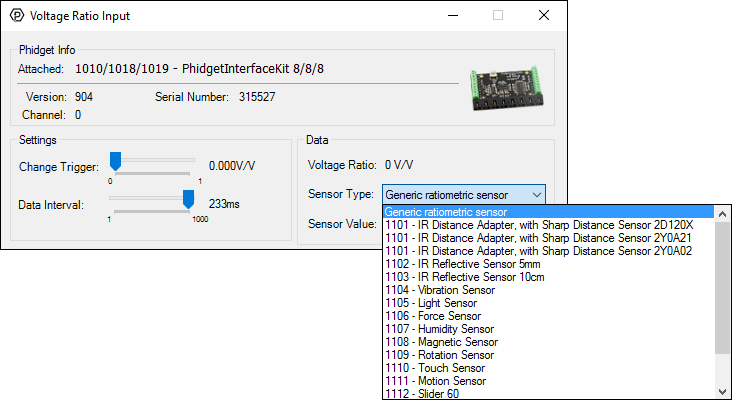Template:UGSensorVoltageRatioInputUnitless: Difference between revisions
From Phidgets Support
(Created page with "===Voltage Ratio Input=== Double-click on a Voltage Ratio Input object in order to run the example: link=|center {{UGExampleDescr...") |
No edit summary |
||
| Line 6: | Line 6: | ||
{{UGExampleDescription}} | {{UGExampleDescription}} | ||
*Modify the change trigger and/or data interval value by dragging the sliders. For more information on these settings, see the [[Data_Rate_and_Change_Trigger|data interval/change trigger]] page. | *Modify the change trigger and/or data interval value by dragging the sliders. For more information on these settings, see the [[Data_Rate_and_Change_Trigger|data interval/change trigger]] page. | ||
*There is no formula to relate the voltage | *There is no formula to relate the voltage to {{{2}}} for the {{{1}}}, therefore, if you select the {{{1}}} from the ''Sensor Type'' drop-down list, the ''Sensor Value'' will simply correspond to the ''Voltage Ratio'' value. The higher the voltage ratio, the more {{{3}}}. | ||
<br clear="all"> | <br clear="all"> | ||
Revision as of 23:31, 15 June 2017
Voltage Ratio Input
Double-click on a Voltage Ratio Input object in order to run the example:

General information about the selected object will be displayed at the top of the window. You can also experiment with the following functionality:
- Modify the change trigger and/or data interval value by dragging the sliders. For more information on these settings, see the data interval/change trigger page.
- There is no formula to relate the voltage to {{{2}}} for the {{{1}}}, therefore, if you select the {{{1}}} from the Sensor Type drop-down list, the Sensor Value will simply correspond to the Voltage Ratio value. The higher the voltage ratio, the more {{{3}}}.
